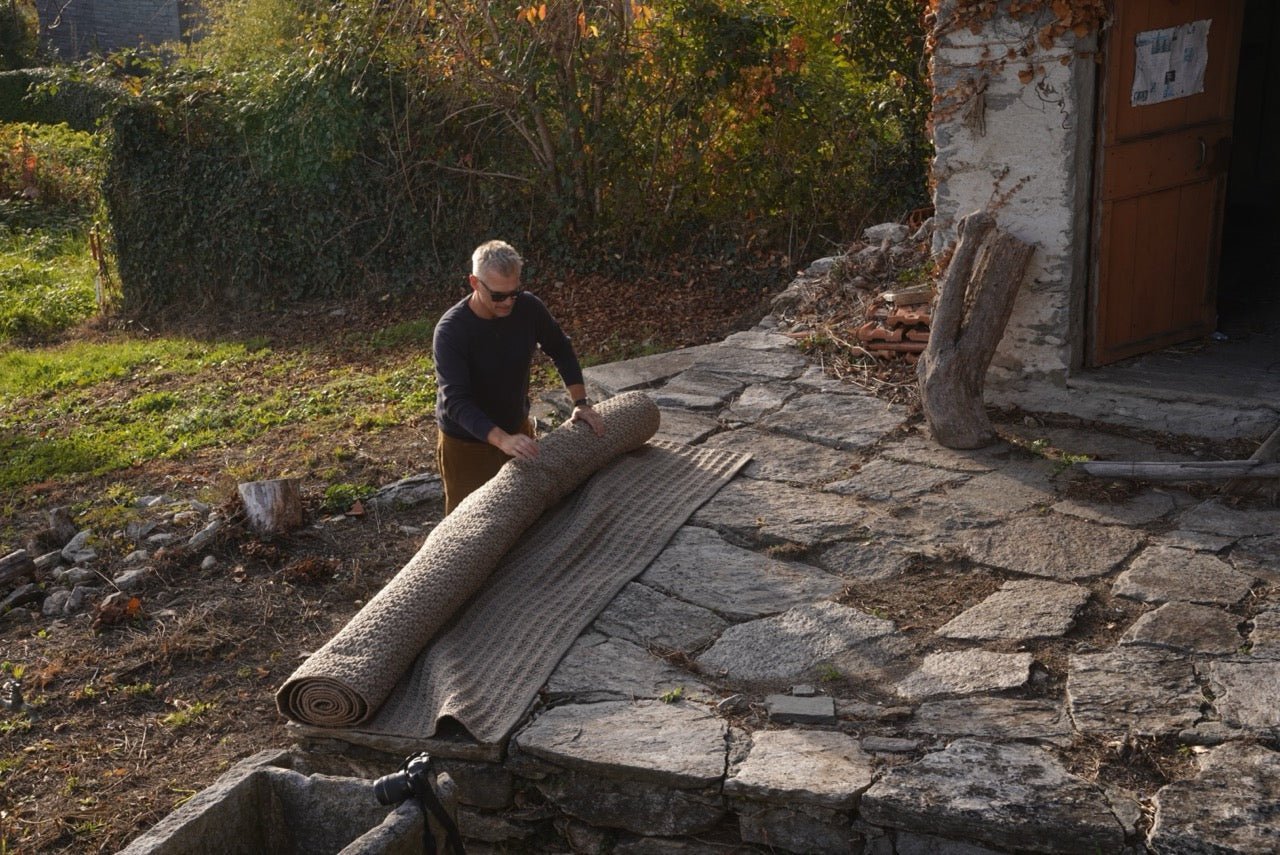Why outdoor rugs? The story behind my collection
The idea of developing outdoor rugs didn't come about spontaneously. It's been with me for eight to ten years – since the moment international brands like B&B Italia , Cassina , Minotti , and Flexform began presenting their first outdoor collections. And I'm deliberately referring to these brands because they are among the big players and have always focused primarily on indoor furniture. Gradually, each of these companies emerged and suddenly included outdoor furniture in their product range, thus recognizing the gap and potential in the market.
I loved outdoor furniture from an early age. And I quickly realized:
When furniture is moved outdoors, the carpet automatically follows.
But the market wasn't ready yet.

The change: Life is increasingly taking place outdoors
Even back then, it was clear that our climate was changing and becoming more Mediterranean. Terraces, balconies, and gardens were increasingly becoming living spaces that merged with the interior. Materials became more durable, textures softer, and colors more elegant.
For me it was clear:
An outdoor rug is not an accessory – it is the foundation.
Space is created by him. Inside and out.
But the industry treated outdoor carpets as a by-product.
Customers had to proceed cautiously – and the market was full of cheap goods that were sold at high prices.
I knew: This can be done better. Much better.
Quality first – and why handmade is indispensable
An outdoor rug has to do a lot:
Weather, UV radiation, temperature changes, dirt, moisture, usage.
And yet he should:
-
be soft
-
appear high-quality
-
Aging beautifully
-
impress with its design
Machine-made goods could only do this to a limited extent.

Handwoven carpets, however, are allowed.
They are more pleasant to the touch, softer to the touch, more beautiful in appearance – and they convey quality that you can see and feel.
But the real challenge was not the production, but the search for a manufacturer that:
-
reliably delivers
-
international quality understood
-
neatly packaged
-
constantly being produced
-
remains punctual
This search took years.
I visited, tested, and eliminated many companies – until I landed on the partner that met my standards in every respect.
Why I was the only one who took the risk: Inventory
A major problem in the market:
All major brands offer outdoor carpets only on request . Samples are available – delivery takes 8–12 weeks.
This is difficult for customers and retailers.
People want to see, feel, buy – now .

I therefore consciously took a risk:
-
I had each design mass-produced.
-
in clearly defined standard sizes: 160×240 , 200×300 , 300×400 cm ,
-
and set up a large warehouse .
This was necessary because, in order to even work with me, the manufacturer required a minimum production run per design. Only in this way could I guarantee quality – and at the same time offer outdoor rugs that were available for immediate delivery .
Today, that is precisely one of my greatest advantages.
Suitable for all weather conditions: tested in Ticino
I tested my carpets myself under real-world conditions – for a year in Ticino.
Result:
-
The carpets hold up without any problems.
-
Moisture is not a problem
-
Color and structure remain stable
-
Cleaning is easy
-
Maintenance is minimal and logical (as with any outdoor product)
In winter, you simply roll it up and store it in a dry place – that's all you need.

Why I am convinced
I love outdoor living.
I love materials.
I love quality.
And I am convinced:
An outdoor rug instantly changes the quality of life in an outdoor space.
Walking over it barefoot – that's the difference.
I invested a lot of money, time, and passion. I tested, discarded, and improved. I learned which structures work, which fibers prove their worth, and how to keep transport, storage, and replenishment efficient.
Today I know:
It was worth it.
And this collection is just the beginning.






